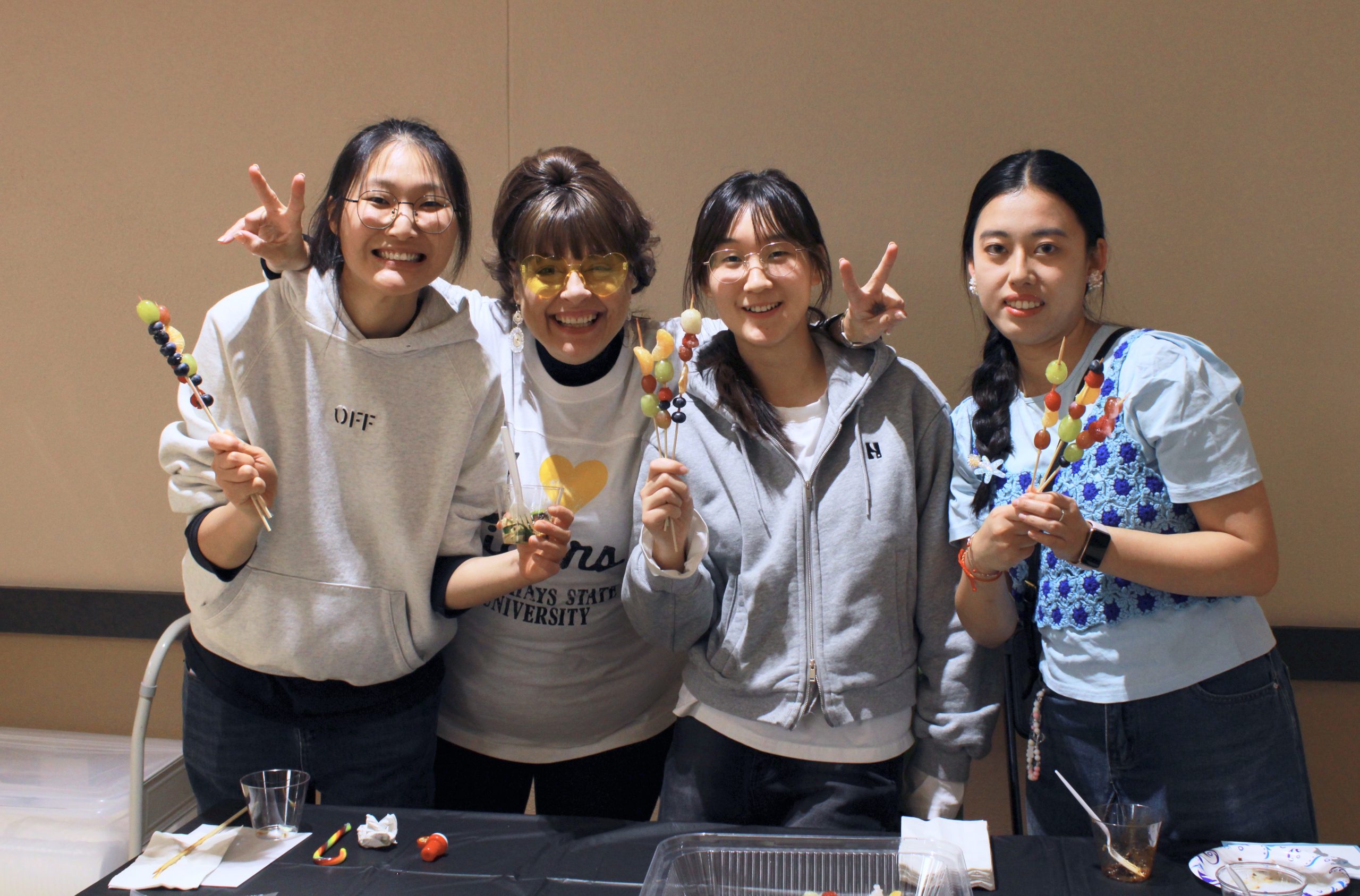By LYNN YANG
Tiger Media Network
Last Monday, the International Festival took place in the Black & Gold Room at Memorial Union. Participants from different countries shared their food. It was not only a treat for taste, but carried the traditions, celebrations and memories of each country and family.
For the event, the Olliff-Boeve family of the United States continued their four-generation tradition of bringing special Funeral Cookies. Originally prepared to comfort families in grief over the loss of a loved one, this little treat made with rice krispies, butterscotch and butter is now part of their cultural memory, while Daniel Williams showcased Americana flavors with St. Louis Pork Ribs.
“Funeral cookies have been a tradition of the Olliff/Boeve Memorial Chapel for the past four generations,” said Director of International Student Services Carol Solko-Olliff. “When families would come to the funeral home to make final arrangements for their loved one’s service, these cookies were served as comfort food along with coffee.”
From Africa to Asia, participants demonstrated a diverse mix of foods and cultures. Ghana’s Mavis Amponsem presented Waakye, a symbol of festivity and togetherness. Waakye is a dish made with jasmine rice, red beans, Waakye leaves and a variety of spices, which tells the story of how Ghanaians celebrate important moments in life, such as weddings and holiday festivals, through food.
Damilola Atanda of Nigeria expresses the joy of harvest and sharing with the classic Jollof rice with fried plantain and chicken. Burkina Faso’s Fatin Yaro shows the home-cooked flavors with its simple, white rice with peanut sauce, which is also flavored with onions, black pepper and garlic.
Chinese food culture was also featured at the event. Boer Cheng presented Zha Chuan, a sauce made with sesame seeds and spices such as cumin and chili peppers, which was brushed onto deep-fried vegetables and meat. Jinrui Zhao presented Tang Hu Lu, a traditional Chinese snack with fresh fruits such as blueberries, strawberries, grapes, green grapes and oranges wrapped in sugar coating. Meanwhile, Xukang Liu presented jackfruit, a symbol of abundance and wisdom, offering a taste of the unique flavor of the southern Chinese fruit.
“Zha Chuan is a Chinese street food, commonly found in night markets in China. It is a variety of food skewered on bamboo sticks, deep fried and then brushed with a dipping sauce,” Boer said. “I always choose to eat this at a dinner gathering with my friends in China. I wanted everyone to try this, so I chose this dish.”
Boer also wore her ethnic dress- Hanfu, which represents China’s intangible cultural heritage.
“It helps people learn more about Chinese culture. Hanfu embodies China’s reputation as the ‘Nation of Clothing and Etiquette’ and the ‘Land of Embroidered Splendor,’” Boer said. “It carries the legacy of China’s outstanding craftsmanship and aesthetics, such as dyeing, weaving, and embroidery techniques, and has preserved over 30 forms of Chinese intangible cultural heritage as well as protected traditional Chinese arts and crafts.”
According to Jinrui, traditional Chinese Tang Hulu mainly consists of hawthorns skewered together and coated with a layer of sugar syrup, and then developed to skewer strawberries, oranges and other fruits.
“Hawthorns are not available here, so just can make some fruits,” Jinrui said. “The more difficult part of this process is to control the boiling time and proportion of the syrup, if the proportion is not right, it may become sweetwater, and if it’s not done properly it may turn back to sugar again.”
Participants from other Asian countries also prepare some food. Natnaree Lertprasertsuk from Thailand shared a refreshingly spicy Thai salad (Yum). Tende Sangmo Lama from Nepal conveyed the Nepalese interpretation of hospitality and sharing happiness with handmade Momo (Nepali dumplings).
“Momo is a traditional steamed dumpling that is usually found at family gatherings, festivals or street stalls and is part of the daily life of the Nepalese people,” Tende said. “The ingredients and preparation of Momo are adapted to suit different regions and tastes and are sometimes served with dipping sauces such as chili sauce.”
In West Africa, Senegal’s Amadou Diawara brings a flavor-filled Chicken Yassa, a classic dish marinated in lemon, onion and mustard.
“Chicken Yassa can be understood both as a dish of marinated chicken in a tangy onion sauce, and as a reflection of West African culinary tradition, where bold flavors and communal dining are highly valued,” Diawara said.
Behind each dish is a long history, a special emotion and a unique cultural heritage. It is these rich elements that make this event a profound cultural experience, connecting people from different countries.
The event was followed by shared food and then the highlight of the house – the music-bouncing session.
In another room, the organizers played music and participants bounced around casually, enjoying the relaxing atmosphere brought by music and rhythm. Along with the dynamic music, participants from different cultural backgrounds danced to their hearts’ content, as if the boundaries of language and culture had disappeared at this moment.
“It feels marvelous. People from different countries who didn’t know each other came together for an event. Laughing and dancing together, there was a sense of unity among the people of the world,” said a student who wishes to remain anonymous, who was moved to tears.

